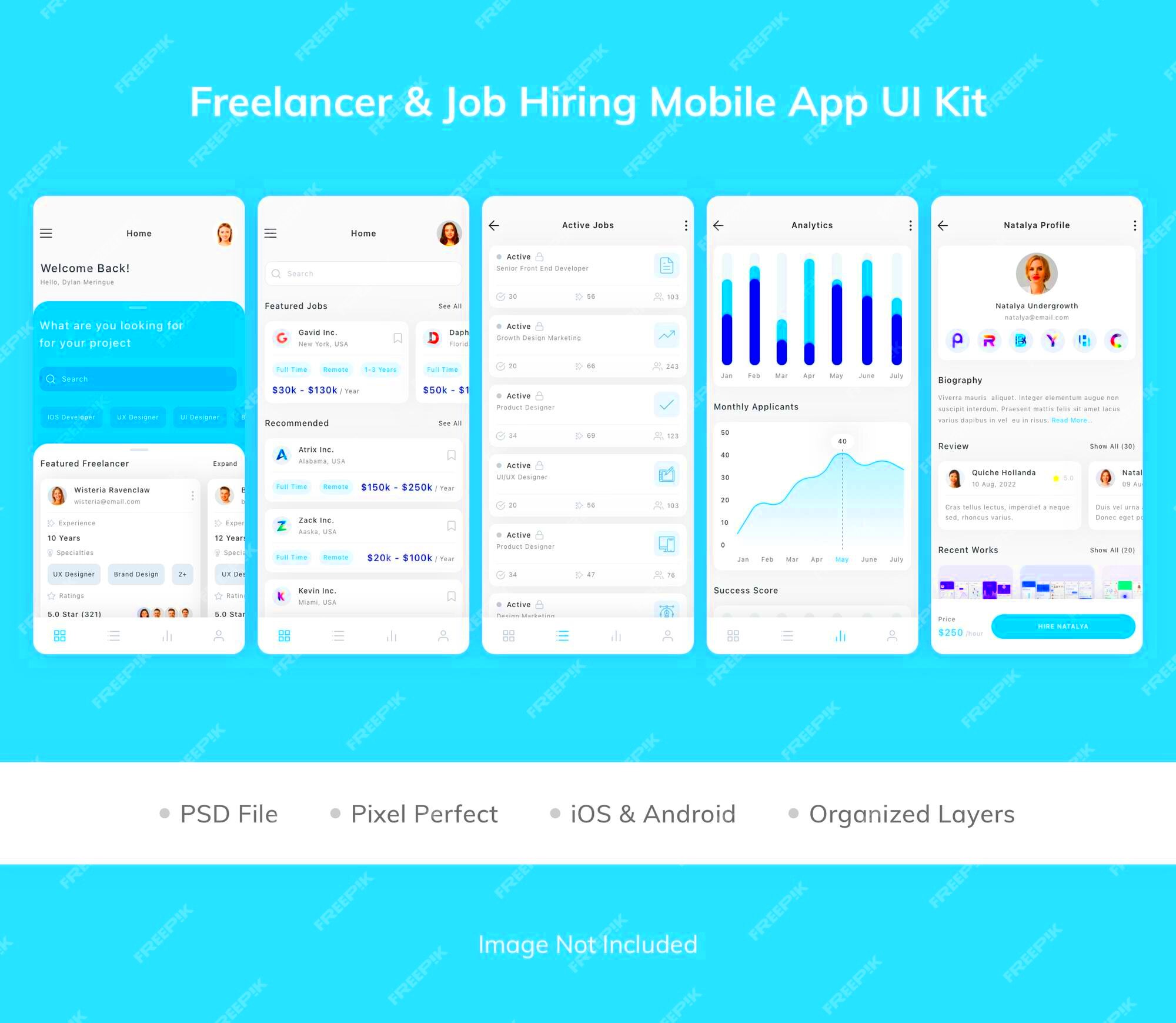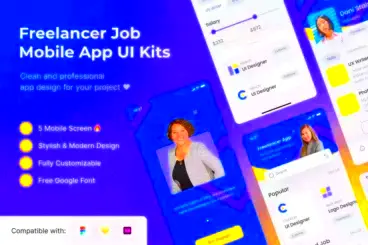A Mobile UI Designer focuses on creating user-friendly and visually appealing interfaces for mobile applications. Their primary goal is to enhance the user experience by ensuring that the app is easy to navigate and visually engaging. They work closely with UX designers, developers, and stakeholders to bring ideas to life. A good Mobile UI Designer balances aesthetics with functionality, making sure that each design element serves a purpose.
Key responsibilities include:
- Designing layouts that optimize screen space
- Selecting colors, fonts, and icons that align with the brand
- Creating wireframes and prototypes to visualize concepts
- Conducting usability testing to gather feedback
- Collaborating with developers to implement designs
In today's competitive market, having a strong understanding of mobile platforms and trends is crucial for success as a Mobile UI Designer.
Key Skills Needed for Mobile UI Design

To thrive as a Mobile UI Designer, certain skills are essential. Here are the key skills you should focus on:
- Design Software Proficiency: Familiarity with tools like Adobe XD, Sketch, and Figma is vital.
- Understanding of User Experience: Knowing how users interact with apps helps in creating intuitive designs.
- Attention to Detail: Small design elements can make a big difference in user experience.
- Color Theory: A good grasp of color theory enhances the visual appeal of your designs.
- Responsive Design: Ability to create designs that adapt to various screen sizes is crucial.
By honing these skills, you can create impactful designs that resonate with users.
Also Read This: List of best 2022 apps for earning money without investment
Building Your Portfolio as a Mobile UI Designer
Your portfolio is your calling card as a Mobile UI Designer. It showcases your skills, style, and ability to solve design problems. Here are some steps to build a strong portfolio:
- Include Diverse Projects: Show a variety of work, including different app types and industries.
- Detail Your Process: For each project, explain your design process from research to final design.
- Use High-Quality Images: Ensure that all visuals in your portfolio are clear and professional.
- Highlight User-Centric Designs: Showcase projects that prioritize user experience.
- Get Feedback: Ask peers or mentors for input on your portfolio to identify areas for improvement.
Consider creating a personal website to display your portfolio. This can help you reach potential clients and make a lasting impression.
Also Read This: How to Be a Freelancer on Fiverr
Finding Clients as a Freelance Mobile UI Designer
Finding clients as a freelance Mobile UI Designer can feel challenging at first, but with the right strategies, you can build a solid client base. Your focus should be on networking, showcasing your work, and leveraging online platforms. Here are some effective ways to connect with potential clients:
- Online Freelance Platforms: Websites like Fiverr, Upwork, and Freelancer allow you to create profiles and bid on projects. Make sure to highlight your skills and showcase your portfolio.
- Social Media Networking: Platforms like LinkedIn, Instagram, and Twitter are great for connecting with potential clients. Share your designs, engage with the community, and participate in relevant discussions.
- Join Design Communities: Becoming part of design forums or groups, such as Dribbble and Behance, can help you meet other professionals and potential clients.
- Attend Networking Events: Look for local meetups, workshops, or conferences focused on design and technology. Meeting people face-to-face can lead to valuable connections.
- Referrals: Don’t hesitate to ask satisfied clients for referrals. Word-of-mouth recommendations can lead to new projects.
By actively seeking out opportunities and promoting your skills, you can find clients who value your expertise.
Also Read This: Best 10 Fiverr Gigs for Podcast Production in 2024
Setting Your Rates and Pricing Your Services
Determining how much to charge for your services as a freelance Mobile UI Designer is crucial. Setting the right rates not only reflects your skills but also impacts how clients perceive you. Here are some tips to help you establish your pricing:
- Research Market Rates: Look into what other designers with similar experience and skills charge. Websites like Glassdoor or PayScale can provide insights.
- Consider Your Experience: If you’re just starting, you might charge less, but as you gain experience and build a strong portfolio, you can increase your rates.
- Decide on Pricing Models: You can choose between hourly rates or fixed project fees. Hourly rates work well for ongoing projects, while fixed fees are ideal for specific tasks.
- Factor in Expenses: Remember to include costs for software, marketing, and any other business expenses when setting your rates.
- Be Open to Negotiation: Some clients may have budgets in mind. Be prepared to negotiate while ensuring you still value your work.
By thoughtfully considering these factors, you can set rates that reflect your worth and attract the right clients.
Also Read This: Should You Give Your Phone Number on Fiverr?
Tools and Software for Mobile UI Design
Using the right tools and software can significantly enhance your efficiency and creativity as a Mobile UI Designer. Here’s a list of essential tools that every Mobile UI Designer should consider:
| Tool | Purpose |
|---|---|
| Adobe XD | For designing and prototyping user interfaces. |
| Sketch | A popular design tool for creating UI elements and layouts. |
| Figma | Great for collaborative design projects with real-time editing. |
| InVision | Used for prototyping and gathering feedback from clients. |
| Zeplin | Helps in handoff between design and development teams. |
Each of these tools has unique features that cater to different aspects of mobile UI design. Experiment with them to find which ones best fit your workflow. Remember, investing time in mastering these tools can lead to better designs and increased productivity.
Also Read This: How to Set Up Your Profile on Fiverr
Marketing Yourself as a Freelance Mobile UI Designer
Marketing yourself effectively is key to attracting clients as a freelance Mobile UI Designer. In today's digital age, having a strong online presence can make all the difference. Here are some strategies to help you market your services:
- Create a Personal Website: A website acts as your online portfolio, showcasing your work, skills, and contact information. Make sure it’s visually appealing and easy to navigate.
- Optimize Your Social Media Profiles: Use platforms like LinkedIn, Instagram, and Facebook to share your designs and connect with potential clients. Keep your profiles professional and highlight your work.
- Engage in Content Creation: Consider starting a blog or vlog about Mobile UI design. Share tips, tutorials, or insights to position yourself as an expert in the field.
- Use Email Marketing: Build a mailing list of potential clients and send out newsletters showcasing your latest projects and design trends.
- Attend Industry Events: Networking at design conferences, meetups, or workshops can help you connect with potential clients and other professionals in the industry.
By consistently marketing yourself and staying active in the design community, you can build a strong reputation and attract more clients.
Also Read This: Do You Have to Be 18 to Use Fiverr? Understanding Age Requirements
FAQs About Freelance Mobile UI Design
As you start your journey as a freelance Mobile UI Designer, you might have some questions. Here are answers to some common FAQs:
- What qualifications do I need to become a Mobile UI Designer? While formal education can be beneficial, having a strong portfolio and skills in design software is often more important.
- How do I charge for my services? You can charge hourly or on a per-project basis. Research market rates and consider your experience when setting prices.
- How can I find clients? Utilize freelance platforms, social media, and networking events to connect with potential clients.
- What skills should I focus on developing? Key skills include proficiency in design software, understanding user experience, and having a keen eye for detail.
- Is it necessary to have a portfolio? Yes, a portfolio showcases your skills and helps potential clients assess your style and capabilities.
By addressing these common questions, you can gain confidence as you start your freelance career.
Conclusion and Next Steps
Becoming a successful freelance Mobile UI Designer takes time, effort, and dedication. By understanding your role, honing your skills, and effectively marketing yourself, you can build a rewarding career. Here are some next steps to consider:
- Develop Your Skills: Continuously learn and adapt to new design trends and technologies.
- Build Your Portfolio: Keep updating your portfolio with your latest projects to showcase your growth.
- Network Regularly: Connect with other designers and potential clients to expand your reach.
- Stay Informed: Follow industry news and trends to keep your designs relevant.
- Set Clear Goals: Define what you want to achieve in your freelance career and create a plan to reach those goals.
With persistence and passion, you can thrive as a freelance Mobile UI Designer. Embrace the journey, and take those next steps toward building your career.




